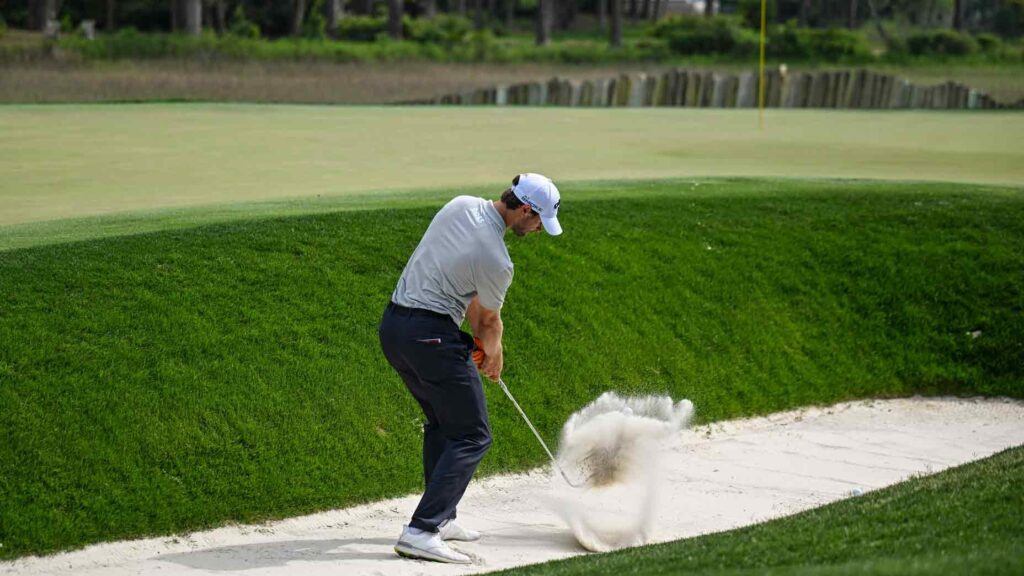Before stepping up to a greenside bunker, golfers face one of the game’s most challenging short-game shots. Success often hinges not just on technique but on crucial preparatory steps taken before the swing. Experts emphasize that proper alignment, assessing sand consistency, and selecting the right club can dramatically improve a player’s chances of escaping the sand-and saving par. This article breaks down what every golfer should do before playing a greenside bunker shot to boost confidence and performance on the course.
Master Your Stance and Club Selection for Greenside Bunker Success
Success around the greenside bunkers begins with the perfect stance and the right club selection. When setting up, position your feet slightly open to the target line-this allows for better swing path control and helps the clubface slide under the ball rather than dig deep into the sand. Keep your weight favoring the front foot to maintain balance and encourage a downward strike through the sand. Additionally, dig your feet in slightly to stabilize your base and prevent slipping during the swing.
Your choice of club plays a pivotal role in escaping bunkers smoothly. Typically, a sand wedge is the go-to, but don’t hesitate to experiment with lob wedges or gap wedges depending on the lip height and distance to the pin. The key is to focus on the bounce angle and loft to ensure you glide through the sand instead of pounding it. Below is a quick guide to help you decide:
| Situation | Recommended Club | Key Tip |
|---|---|---|
| Low lip, close pin | Sand Wedge (54¬į) | Open face, steeper swing |
| High lip, longer shot | Lob Wedge (60¬į) | More bounce, softer landing |
| Firm sand, tight lies | Gap Wedge (50¬į) | Square face, shallow swing |
Analyze Sand Texture and Adjust Swing Technique to Control Ball Flight
Before stepping up to the ball in a greenside bunker, take a moment to examine the sand texture beneath your feet. Is it damp, firm, or fluffy? Each condition demands subtle changes to your swing. Firmer sand allows for a more aggressive clubface entry, as the ball will likely react with less resistance. Conversely, fluffy or dry sand calls for a gentler approach, requiring you to open the clubface slightly and swing less forcefully to prevent the club from digging too deeply. Understanding this nuance can be the difference between a neat escape and an unintended splash into trouble.
Once you’ve assessed the sand, adjust your technique in tandem with these insights. Adopt a slightly wider stance to maintain balance, and focus on accelerating through the shot with your wrists firm but relaxed. Key swing tweaks include:
- Entry Angle: Steepen your swing plane in soft sand to scoop out the right amount of sand and ball.
- Follow-Through: Ensure a full finish to avoid decelerating-this promotes consistent ball flight.
- Clubface Position: Open the face more in fluffy sand to increase loft and trajectory.
| Sand Texture | Recommended Swing Adjustment | Expected Ball Flight |
|---|---|---|
| Firm | More aggressive, shallow entry | Lower, running shot |
| Moist | Moderate swing speed, neutral face | Medium trajectory, controlled spin |
| Fluffy | Open face, softer acceleration | High, soft landing |
Wrapping Up
In summary, taking a moment to properly assess your stance, club selection, and shot strategy can significantly improve your chances of successfully escaping a greenside bunker. By focusing on these key preparatory steps before you play, you set yourself up for greater control and confidence in one of golf’s most challenging situations. As the game continues to evolve, mastering the fundamentals remains essential-so next time you find yourself facing a greenside bunker, remember: preparation is the first step toward a better shot.








